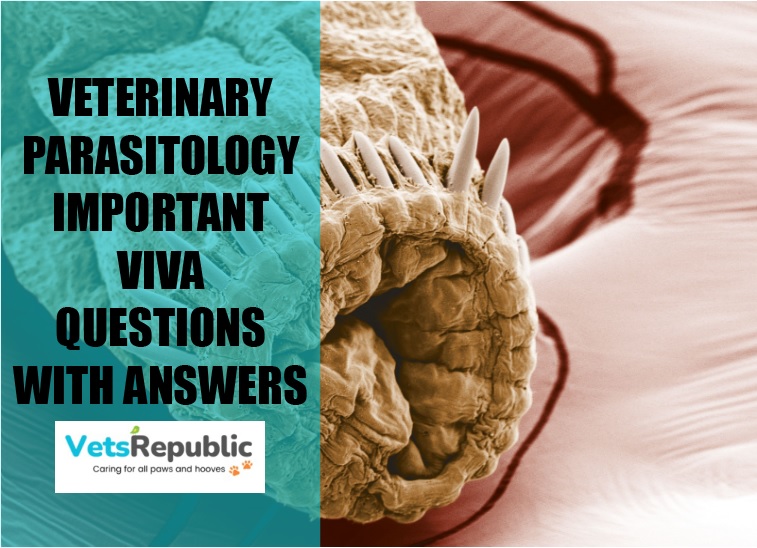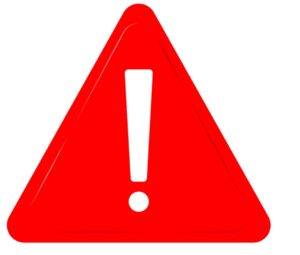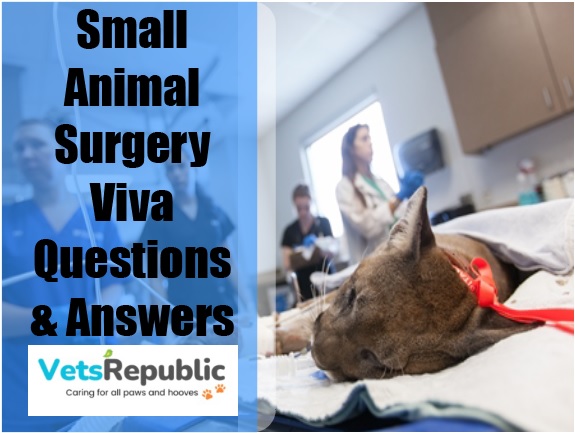In this article, we will share with you a list of small animal surgery authentic viva questions and answers that will be beneficial for all newcomers or future veterinarians. We will also give you a list of key tips that will make you excel in your examination period. We will give you suggestions of the books that you can use to embrace more knowledge. So stay connected.
Veterinary Surgery Authentic Viva Questions And Answers
Here is a list of veterinary surgery authentic viva questions and answers that you can use as a weapon to conquer your vivas like a warrior.
Principles of Surgical Asepsis
- What is surgical asepsis, and why is it critical in veterinary surgery?
Answer: Surgical asepsis is the practice of maintaining a sterile environment to prevent contamination during surgeries. It’s vital to minimize the risk of postoperative infections and promote successful patient recovery.
2. Enumerate the steps involved in maintaining surgical asepsis in the operating room.
Answer: The steps include:
a.Proper handwashing
b. Wearing sterile attire
c. Sterilizing instruments
d. Creating a sterile field
e. Handling materials to prevent contamination.
3. How do surgical team members ensure strict adherence to aseptic techniques during a procedure?
Answer: Team members are trained to follow specific protocols, including proper gowning and gloving techniques, using sterile instruments, and maintaining a sterile field throughout the surgery.
4. Discuss the importance of environmental controls in maintaining asepsis during surgery.
Answer: Environmental controls involve ensuring proper ventilation, controlling the traffic of workers in the operating room, and maintaining cleanliness to reduce the risk of microbial contamination.
Sterilization and Disinfection
- Differentiate between sterilization and disinfection regarding surgical instruments.
Answer: Sterilization eliminates all microorganisms, including spores, while disinfection reduces the number of microorganisms but may not eliminate all spores.
2. What are the common methods used for sterilizing surgical instruments in veterinary practice?
Answer: Methods include autoclaving, ethylene oxide gas, chemical sterilants, and radiation.
3. Explain the process of disinfecting the surgical environment to ensure patient safety.
Answer: Disinfection involves using chemicals or physical agents to reduce microbial contamination on surfaces, floors, and equipment in the surgical area.
4. How often should surgical instruments and equipment be sterilized or disinfected to maintain asepsis?
Answer: Surgical instruments should be sterilized before each use, while the surgical environment and equipment should be regularly disinfected as per guidelines.
Surgical Facilities, Equipment, and Personnel
1. What are the essential features of an ideal surgical facility for small animals? Answer: Key features include proper ventilation, separate clean and contaminated areas, adequate space, and efficient workflow.
2. Discuss the roles and responsibilities of different personnel within the surgical team.
Answer: Roles include surgeons, anesthetists, scrub nurses, and circulating nurses, each responsible for specific tasks to ensure a successful surgical outcome.
3. How do surgical team members ensure the proper functioning and maintenance of surgical equipment?
Answer: Regular equipment checks, maintenance schedules, and following manufacturer guidelines to ensure equipment reliability and safety during surgeries.
4. What measures can be taken to ensure the safety of both the surgical team and the patient during a procedure?
Answer: Adhering to safety protocols, maintaining a sterile environment, proper patient positioning, and effective communication among team members are crucial for safety.
Preoperative and Intraoperative Care
- Why is a comprehensive preoperative assessment necessary for surgical patients?
Answer: Preoperative assessments help identify patient risks, plan anesthesia, and ensure optimal patient preparation for surgery.
2. Describe the key components of intraoperative care during small animal surgeries.
Answer: Components include monitoring anesthesia, aseptic technique adherence, tissue handling, and effective communication within the surgical team.
3. What are the primary considerations for selecting an appropriate anesthetic protocol for a surgical patient?
Answer: Factors include the patient’s health status, procedure complexity, duration, and potential risks associated with anesthesia.
4. How does effective communication within the surgical team impact the outcome of a procedure?
Answer: Clear communication prevents errors, improves coordination, and enhances patient safety and surgical outcomes.
Preparation of the Operative Site
- What steps are involved in preparing the surgical site before a small animal surgery?
Answer: Steps include clipping hair, aseptic skin preparation, draping the area, and creating a sterile field.
2. Discuss the importance of proper surgical site preparation in preventing postoperative complications.
Answer: Meticulous preparation reduces the risk of surgical site infections, ensuring optimal healing and recovery for the patient.
3. How does the size and location of the surgical incision impact the healing process?
Answer: Smaller incisions generally result in quicker healing and reduced risk of complications compared to larger incisions.
4. What are the different methods available for prepping and draping the surgical site?
Answer: Methods include skin antiseptics, sterile drapes, and techniques to isolate the surgical field from non-sterile areas.
Preparation of the Surgical Team
- Discuss the significance of teamwork and coordination among surgical team members.
Answer: Effective teamwork ensures smooth workflow, reduces errors, and improves patient outcomes during surgeries.
2. What measures can be taken to ensure effective preparation of the surgical team before a procedure?
Answer: Preoperative briefings, assigning roles, and open communication channels among team members facilitate effective preparation.
3. How does continued education and training benefit the surgical team’s performance and patient care?
Answer: Ongoing education keeps the team updated on advancements, enhances skills, and ensures adherence to best practices in surgery.
4. What strategies can be implemented to manage stress and maintain focus within the surgical team during lengthy procedures?
Answer: Rotation of responsibilities, breaks, and team support strategies help alleviate stress and maintain focus.
Surgical Instrumentation
- Explain the classification and proper handling of surgical instruments used in veterinary surgery.
Answer: Instruments are classified based on their function and include cutting, dissecting, grasping, and retracting instruments, among others. Proper handling involves cleaning, sterilization, and storage.
2. Discuss the importance of maintaining sharpness and proper functionality of surgical instruments.
Answer: Sharp and functional instruments reduce tissue trauma, improve precision, and contribute to successful surgical outcomes.
3. How can the surgical team ensure the proper sterilization and storage of surgical instruments?
Answer: Following manufacturer guidelines for cleaning, packaging, and sterilization, and storing instruments in a clean, dry environment maintains their sterility.
4. What measures can be taken to prevent damage and corrosion of surgical instruments?
Answer: Proper cleaning, avoiding harsh chemicals, and appropriate handling and storage prevent damage and corrosion.
Biomaterials, Suturing, and Hemostasis
Explain the types and uses of biomaterials commonly utilized in veterinary surgery.
Answer: Biomaterials include sutures, staples, and tissue adhesives used for wound closure, tissue support, and hemostasis.
Discuss the factors influencing the selection of suture materials for different surgical procedures.
Answer: Factors include tissue type, location, tension, and anticipated healing duration, which dictate the choice of suture materials.
What techniques can be employed to achieve effective hemostasis during surgery?
Answer: Techniques include direct pressure, ligatures, electrocaut.
Surgical Infections and Antibiotic Selection
- What are the primary sources and routes of surgical infections in small animal surgery?
Answer: Surgical infections can originate from endogenous flora, the environment, or contaminated surgical equipment. Routes include direct contact, airborne transmission, or surgical site contamination.
2. Discuss the principles guiding antibiotic selection in preventing surgical site infections.
Answer: Selection is based on the specific pathogen’s susceptibility, tissue penetration, and minimizing the development of antibiotic resistance.
3. How do surgeons determine the necessity and duration of antibiotic use in the postoperative period?
Answer: Antibiotics are prescribed based on the patient’s risk factors, the invasiveness of the procedure, and the potential for postoperative infection. The duration is typically short and based on the procedure’s risk of infection.
Nutritional Management of the Surgical Patient
- Explain the importance of nutritional support in the perioperative period for small animal surgical patients.
Answer: Proper nutrition is crucial for wound healing, immune function, and maintaining the patient’s metabolic needs during the stress of surgery.
2. What nutritional considerations should be addressed in critically ill surgical patients?
Answer: Patients may require specialized feeding strategies, including enteral or parenteral nutrition, to meet their nutritional needs and aid in recovery.
3. How does nutritional assessment influence the perioperative management of surgical patients?
Answer: Assessment helps identify malnutrition and guides the development of tailored nutritional plans to optimize patient outcomes.
Fundamentals of Physical Rehabilitation
- Discuss the role of physical rehabilitation in the postoperative management of small animal surgical patients.
Answer: Rehabilitation aids in improving mobility, strength, and function post-surgery, promoting faster recovery and better outcomes.
2. What rehabilitation techniques are commonly employed in small animal surgery recovery?
Answer: Techniques include controlled exercises, hydrotherapy, therapeutic ultrasound, and other modalities aimed at improving mobility and function.
3. How does physical rehabilitation contribute to preventing postoperative complications in small animals?
Answer: Rehabilitation reduces the risk of complications such as muscle atrophy, joint stiffness, and impaired mobility, improving overall recovery.
Anesthesia and Perioperative Multimodal Therapy
- Explain the importance of multimodal therapy in perioperative pain management.
Answer: Multimodal therapy combines various analgesic drugs and techniques to target different pain pathways, providing better pain relief with fewer side effects.
2. What factors influence the choice of anesthetic agents in small animal surgery?
Answer: Factors include the patient’s health status, procedure type and duration, and potential side effects of the anesthetic agents.
3. How can the surgical team mitigate the risks associated with anesthesia in small animal surgery?
Answer: Mitigation involves pre-anesthetic assessments, proper patient monitoring during surgery, and ensuring anesthetic equipment is in optimal condition.
Principles of Minimally Invasive Surgery
- Describe the advantages and disadvantages of minimally invasive surgery in small animals.
Answer: Advantages include reduced tissue trauma, quicker recovery, and smaller incisions. Disadvantages might involve specialized equipment and a steep learning curve.
2. What are the key principles guiding the selection of patients for minimally invasive procedures?
Answer: Patient selection factors include the type of procedure, patient health status, and the surgeon’s experience with minimally invasive techniques.
3. How does the surgical team adapt their techniques for minimally invasive surgery compared to traditional open surgery?
Answer: Techniques involve using specialized instruments, laparoscopic or endoscopic visualization, and adapting to a different approach to tissue manipulation.
Regenerative Medicine and Stem Cell Therapy
- Explain the role of regenerative medicine in small animal surgery.
Answer: Regenerative medicine involves techniques like stem cell therapy and tissue engineering, aiming to enhance tissue repair and regeneration post-surgery.
2. What are the potential applications of stem cell therapy in small animal surgery?
Answer: Stem cell therapy can aid in tissue healing, treating musculoskeletal disorders, and promoting regeneration in damaged tissues.
3. How do surgeons ensure the safety and efficacy of regenerative medicine techniques in small animal patients?
Answer: Safety and efficacy are assessed through careful patient selection, standardized protocols, and monitoring for adverse effects.
Surgery of the Integumentary System
- Enumerate common indications for surgical procedures on the integumentary system in small animals.
Answer: Surgical interventions may be required for tumor removal, wound repair, skin grafting, or treating extensive skin conditions.
2. Discuss the different approaches used for wound closure following integumentary surgeries.
Answer: Closure methods include primary closure, delayed primary closure, secondary intention healing, and skin grafts or flaps.
3. What postoperative care measures are essential for successful recovery following integumentary surgeries?
Answer: Proper wound monitoring, bandage changes, restriction of activity, and administration of medications as prescribed are crucial for optimal healing.
Surgery of the Eye
- Outline common surgical procedures performed on the eye in small animal surgery.
Answer: Surgeries include cataract removal, enucleation, eyelid reconstructions, and treatment of conditions like glaucoma or corneal ulcers.
2. Explain the postoperative care requirements for patients undergoing eye surgeries.
Answer: Post-op care involves protecting the eye, administering medications, monitoring for signs of complications, and follow-up evaluations.
3. What factors influence the selection of appropriate ocular surgical techniques for specific conditions?
Answer: Factors include the underlying eye condition, its severity, and the patient’s overall health, determining the most suitable surgical approach.
Surgery of the Ear
- Discuss the common surgical procedures performed for ear conditions in small animals.
Answer: Procedures include ear canal ablation, lateral ear resection, and procedures to address conditions like chronic otitis or ear polyps.
2. Explain the challenges associated with postoperative care in ear surgeries for small animals.
Answer: Challenges may involve preventing ear infections, managing postoperative pain, and monitoring for potential complications in healing.
How does the surgical team prepare for and prevent complications in ear surgeries?
Answer: Preparation includes a thorough preoperative assessment, proper surgical planning, and adherence to aseptic techniques to minimize the risk of complications.
Surgery of the Abdominal Cavity
- Enumerate common abdominal surgeries performed in small animals and their indications.
Answer: Surgeries may include procedures for gastrointestinal foreign bodies, tumor excision, hernia repair, and splenectomy, among others.
2. Discuss the key perioperative considerations for successful abdominal surgeries in small animals.
Answer: Considerations involve preoperative stabilization, meticulous aseptic techniques, organ protection, and postoperative monitoring for complications.
3. What are the primary challenges faced by the surgical team during abdominal surgeries in small animals?
Answer: Challenges include maintaining hemostasis, preventing contamination, and ensuring optimal tissue handling in the abdominal cavity.
Surgery of the Digestive System
- Explain the surgical techniques used for treating gastrointestinal conditions in small animals.
Answer: Techniques involve enterotomy, resection and anastomosis, gastrotomy, and procedures to address conditions like intussusception or foreign body removal.
2. Discuss the specific postoperative dietary and nutritional considerations for patients undergoing digestive system surgeries.
Answer: Post-op dietary plans should aim at promoting healing, preventing complications, and gradually reintroducing normal feeding.
3. How does the surgical team manage potential complications associated with digestive system surgeries?
Answer: Immediate recognition and intervention for complications such as hemorrhage, leakage, or bowel obstruction are crucial for successful outcomes.
Surgery of the Liver
- Outline common surgical procedures performed on the liver in small animal surgery.
Answer: Surgeries include liver lobectomy, biopsy, cyst removal, and interventions for conditions like hepatocellular carcinoma or cholangitis.
2. Explain the challenges and considerations involved in hepatic surgeries for small animals.
Answer: Challenges include preserving liver function, minimizing bleeding, and preventing complications like bile leakage post-surgery.
3. What preoperative diagnostic evaluations are essential before performing liver surgeries in small animals?
Answer: Evaluations include imaging studies, liver function tests, and biopsies to assess the liver’s condition and guide surgical planning.
Surgery of the Extrahepatic Biliary System
- Describe the surgical interventions used for treating diseases of the extrahepatic biliary system in small animals.
Answer: Procedures include cholecystectomy, choledochotomy, and interventions for addressing conditions like cholelithiasis or biliary obstruction.
2. Explain the importance of postoperative monitoring and management for patients undergoing extrahepatic biliary surgeries.
Answer: Close monitoring for bile leakage, and infection, and maintaining nutritional support is vital post-surgery.
Surgery of the Endocrine System
- Discuss the common endocrine surgeries performed in small animal practice and their indications.
Answer: Surgeries include adrenalectomy, thyroidectomy, and interventions for conditions like hyperadrenocorticism or hyperthyroidism.
2. How does the surgical team address potential complications during and after endocrine system surgeries?
Answer: Monitoring for hormonal imbalances, preventing hemorrhage, and managing electrolyte disturbances are crucial aspects of care.
Surgery of the Hemolymphatic System
- Explain the surgical interventions for diseases affecting the hemolymphatic system in small animals.
Answer: Procedures include splenectomy, lymph node excision, and interventions for conditions like immune-mediated hemolytic anemia or lymphoma.
2. What preoperative considerations are essential before performing surgeries involving the hemolymphatic system?
Answer: Evaluating the patient’s hematologic status, assessing for potential coagulopathies, and ensuring appropriate blood product availability are important.
Surgery of the Kidney and Ureter
- Outline the common surgical procedures performed on the kidney and ureter in small animals.
Answer: Surgeries include nephrectomy, ureteral reimplantation, and interventions for conditions like urolithiasis or polycystic kidney disease.
2. Discuss the specific challenges and considerations in managing kidney and ureteral surgeries in small animals.
Answer: Challenges involve preserving renal function, preventing urinary leakage, and managing electrolyte imbalances post-surgery.
Surgery of the Bladder and Urethra
- Describe the surgical interventions used for bladder and urethral conditions in small animal surgery.
Answer: Surgeries include cystotomy, urethrostomy, and interventions for addressing conditions like bladder stones, neoplasia, or urethral obstruction.
2. Explain the importance of postoperative care and monitoring for patients undergoing bladder and urethral surgeries.
Answer: Monitoring for urinary leakage, preventing urinary tract infections, and ensuring appropriate catheter care are crucial post-surgery.
Surgery of the Reproductive and Genital Systems
- Enumerate common surgical procedures performed on the reproductive and genital systems in small animals.
Answer: Surgeries include spaying, neutering, cesarean section, and interventions for conditions like pyometra or testicular neoplasm.
Optimizing Viva Success Keys For Veterinary Students
- Prioritize understanding core concepts and principles comprehensively.
- Engage in mock viva sessions or practice with peers to simulate the actual exam environment.
- Analyze case studies and clinical scenarios to apply theoretical knowledge practically.
- Focus on clear and concise communication during viva sessions, ensuring understanding and clarity in your responses.
- Practice active listening to grasp examiners’ questions accurately before responding.
- Practice managing time during viva sessions.
- Consult professors, senior students, or mentors for guidance and advice on viva preparation.
- Implement a regular revision schedule to reinforce learned concepts and prevent forgetting crucial information.
- Cultivate a positive attitude and belief in your abilities.
- Maintain a healthy balance between study and personal life.
The Vets Republic website has initiated its journey to convey information that is useful for the veterinarian audience. Anything that we have published here is just for education purposes. We have not posted any copyrighted content Your continuous support would be highly appreciated.
You might also be interested in:
Veterinary Parasitology Important Viva Questions With Answers [All Details]


This blog post is just for educational purposes and to convey important information to our audience. The content that we are publishing on our website is not collected or plagiarized from any source.. We are just sharing our experience If anyone finds a text that is plagiarized from any source in our articles, please send us an email at Rizqum789@gmail.com and we will remove it within 24 hours.

